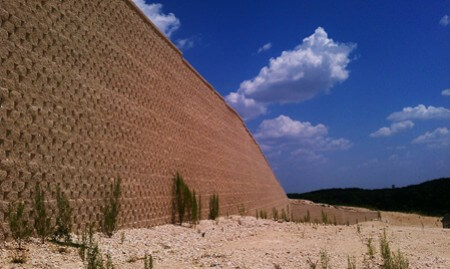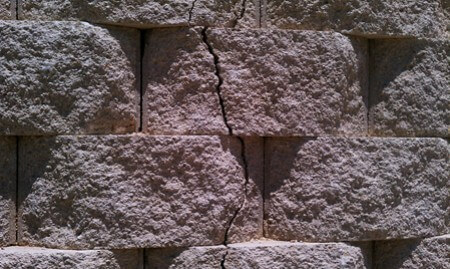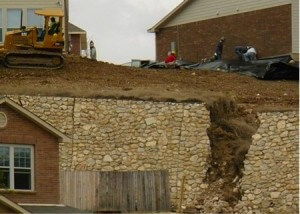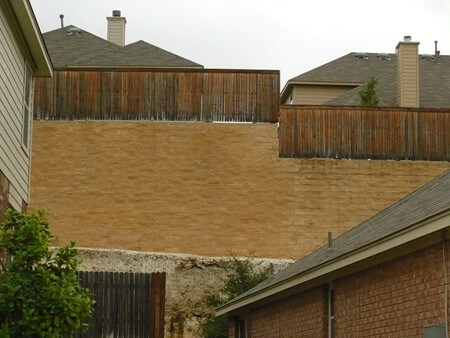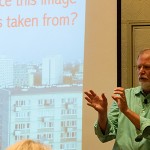After a towering retaining wall collapsed and threatened scores of homes last year in the San Antonio neighborhood of Rivermist, an obvious question arose: How safe were the untold number of other residential retaining walls in the city?
Under city code, walls in San Antonio over four feet tall were supposed to go through a permitting process. But until Rivermist, that permitting process rarely happened in new subdivisions — despite the widespread use of large walls to sculpt hillsides in the rapidly growing Texas Hill Country.
In other words, no one at the city could vouch for the safety of other retaining walls, many of which are 20 feet high or taller.
After the collapse at Rivermist, the city announced that all tall residential walls built in the last three years had to be verified as safe by an engineer and permitted. So far, most walls have passed muster.
But one subdivision with 14 retaining walls is still having problems.
It’s called the Heights of Crownridge, located on the far North Side by the Crownridge Canyon Natural Area. Jennifer Hiller found out about it after a concerned resident emailed her photos of a long vertical crack in a huge wall in the middle of the subdivision.
Jennifer and I had written a bunch of stories about the problems with retaining walls in San Antonio. After Jen got the tip, we drove to Crownridge over the weekend with baby Sophie sleeping in the car. The subdivision was unfinished — streets were completed but only a handful of homes had been built. There were no lawns. Just sun-baked dirt and rock.
And there are a lot of tall retaining walls. The one the tipster alerted Jen to is huge:
And sure enough, there was a long, very noticeable crack on the northern section. This is part of the crack:
Jen sent an open records request to the city for more information about what was going on at the Heights of Crownridge. A couple weeks ago we sat down in an office of the city’s Planning and Development Services Department to read a stack of letters and engineering plans related to all the retaining walls in the unfinished subdivision.
No engineering plans had yet been received for the big wall we checked out. (I later interviewed Scott Rozier, the owner of Rosch Co., which built the wall with the crack. He stood by his work.)
But there were problems with other walls. Going through the documents, Jen and I had a case of deja vu. It turned out some of the same people involved with the wall at Rivermist also designed and built a wall that later cracked at the Heights of Crownridge.
Engineer Russell Leavens designed the Rivermist wall, and it was built by Gravity Walls Ltd. They also designed and built a different wall at Crownridge that suffered from a large crack and was deemed unsafe. This wall was on the southeast corner of the subdivision, which we hadn’t known about. Engineer Tim Theis determined that the wall had not been built according to plans.
At Rivermist, city officials had also claimed that Gravity Walls Ltd. did not build the wall according to engineering plans.
Theis mentioned problems with the particular type of retaining wall used in both subdivisions. Gravity walls rely on their sheer mass to remain stable. But once they’re built, it’s difficult for inspectors to make sure the walls were constructed right. That problem was noted at Rivermist and also at Crownridge.
As we reviewed the documents, a city engineer who was handling the case came by the office. It turned out construction had been on hold at some lots for months as the concerns about the retaining walls were being sorted out.
The pile of documents included maps showing the location of each retaining wall and who built it. Coupled with the info we learned from other documents and interviews, the maps helped me build this interactive feature that showed readers what was going on in the subdivision:
View Retaining wall problems at the Heights of Crownridge in a larger map
We could have cranked this story out faster if Jen hadn’t made the open records request. But the documents gave us details that we might not have otherwise known, such as the connection to Gravity Walls Ltd.
It simply pays to dig up pertinent records … even if it slows you down.
